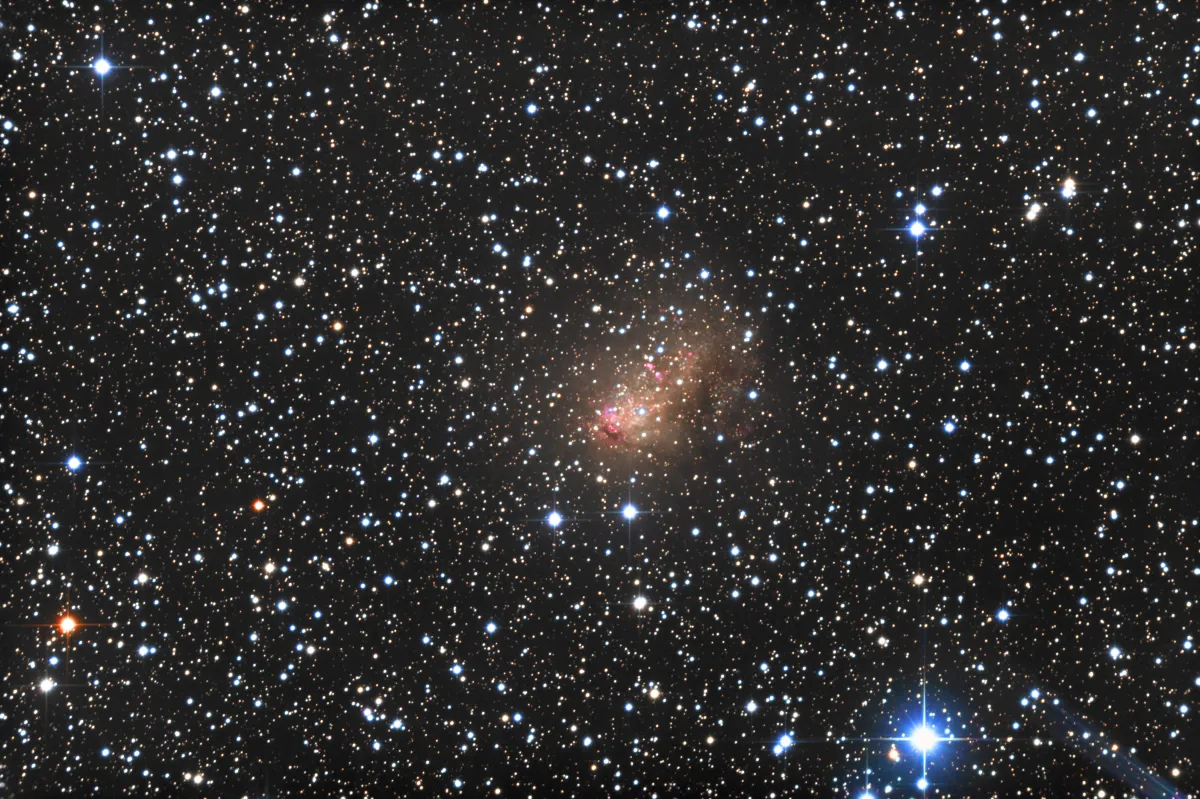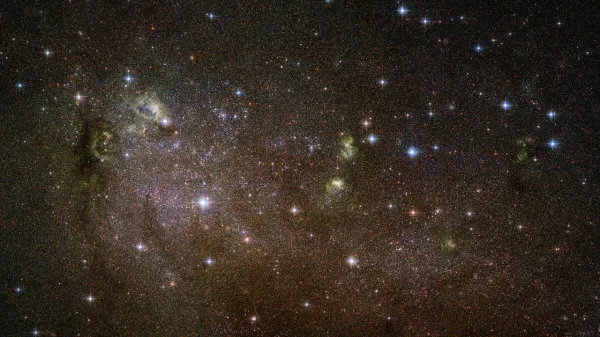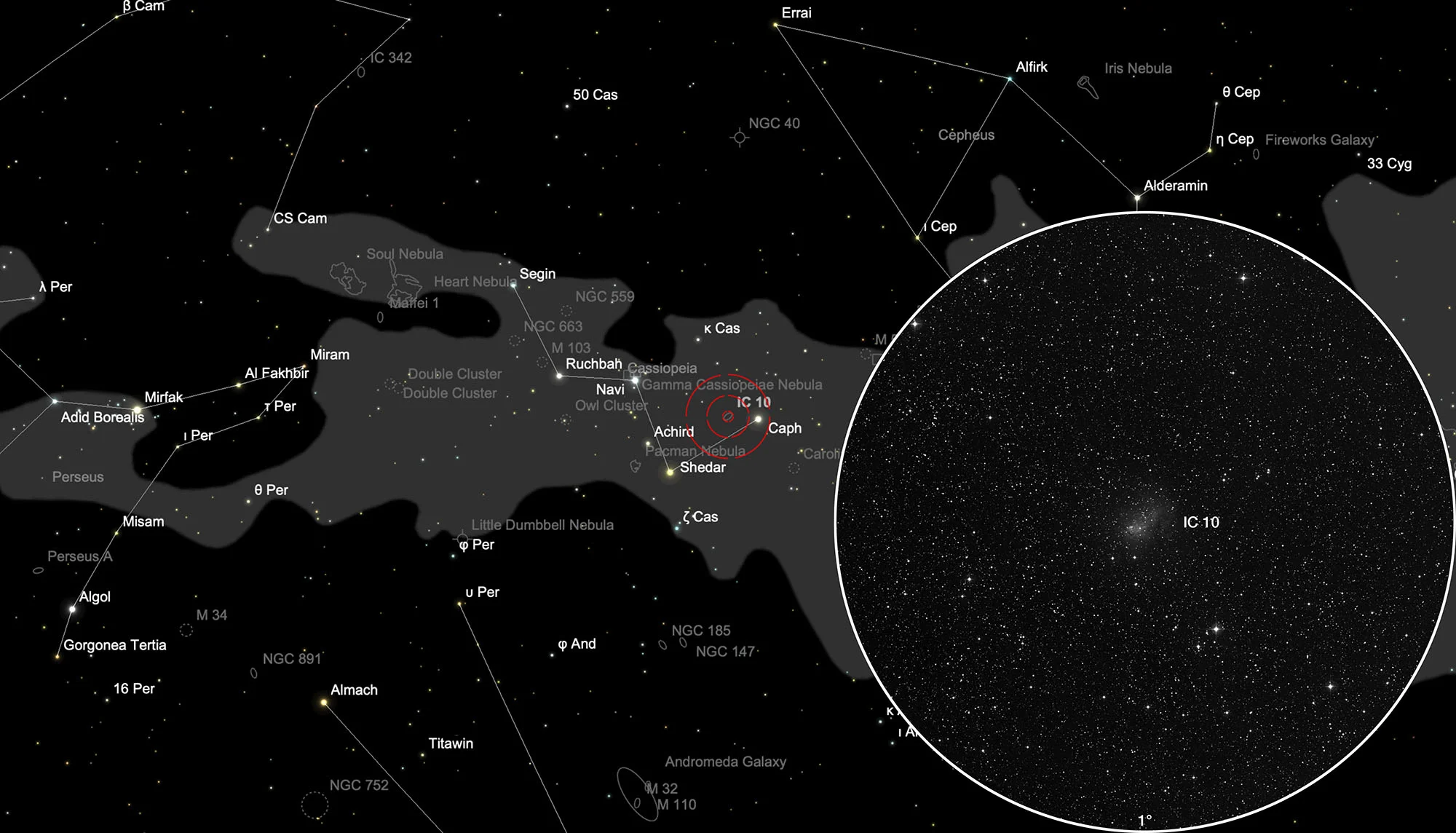Dwarf Galaxy IC 10

History
The galaxy IC 10 was discovered on 8 October 1887 by the American astronomer Lewis Swift with the 16 inch Clark refractor of the Warner Observatory in Rochester, New York. The description in Dreyers «Index Catalogue» released in 1805 reads as follows: «Faint stars involved in extremely faint, very large nebulosity». [277, 314]
Physical Properties

IC 10 is an irregular dwarf galaxy, like our Milky Way or the Andromeda galaxy. It belongs to the local group. Distances range from 0.6 Mpc to 0.8 Mpc (1.9 to 2.6 million light years). [145] It is the closest starburst galaxy to us. A large number of young stars are actively being formed here, powered by hydrogen gas, which collects in extensive molecular clouds. [435] The galaxy is only about three degrees from the galactic equator (plane of the Milky Way), which is why the view in the visual area is severely impaired by the interstellar gas and dust.
| Designation | IC 10 |
| Type | Gx (IBm) |
| Right Ascension (J2000.0) | 00h 20m 24.5s |
| Declination (J2000.0) | +59° 17' 33" |
| Diameter | 6.4 × 5.3 arcmin |
| Photographic (blue) magnitude | 11.8 mag |
| Visual magnitude | 10.4 mag |
| Surface brightness | 14.0 mag·arcmin-2 |
| Position Angle | 135° |
| Redshift (z) | -0.001161 |
| Metric Distance | 0.860 Mpc |
| Dreyer Description | F * inv in eF, vL neb |
| Identification, Remarks | UGC 192; MCG 10-1-1; IRAS 00177+5900 |
Finder Chart
The galaxy IC 10 is located in the constellation Cassiopeia. On 29 September it is in opposition to the Sun and crosses the meridian at local midnight. The best time to observe is June to February, when it is highest at night.
Visual Observation
400 mm Aperture: IC 10 is recognizable when seen indirectly as a faint, structureless diffuse spot. — 400 mm f/4.5 Taurus Dobsonian, Hasliberg, 16. 12. 2023, SQM 21.2, Bernd Nies
